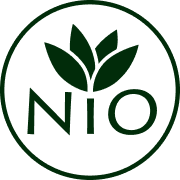El té verde de Kioto tiene una larga y rica historia y sigue siendo una de las regiones productoras de té más famosas de Japón. 🇯🇵
En este artículo, hablaremos sobre cómo el té llegó a Kioto y cómo se ha entrelazado con la historia japonesa a lo largo de los últimos mil años.
Seguiremos la evolución del té, desde su paso de ser una bebida exclusiva para unos pocos a una bebida disfrutada por personas de todo Japón.
¡Comencemos! 👇
El origen del té verde de Kioto

Los primeros registros del consumo de té no se remontan a Kioto, sino a Nara, la primera capital permanente de Japón. El té no se cultivaba aquí, pero fue traído desde China por los monjes japoneses que viajaban para aprender sobre el budismo de los monjes chinos. Si te interesa el té verde de China, no te pierdas nuestro artículo. 👉 Aprende todo lo que necesitas saber sobre el té verde de China.
Nuestro viaje por la historia del té de Kioto comienza en los terrenos del templo Kozanji. Fue aquí donde, por primera vez, los monjes no solo trajeron té, sino también semillas para plantar en los terrenos del templo. Se atribuye a un monje llamado Eisai ser el primero en traer semillas de té de China en 1191. Este pequeño campo de té, situado en las afueras del templo, se considera una de las primeras plantaciones de té de Japón.
Té verde de Kioto en el templo
El templo Kozanji se encuentra a pocos kilómetros al noroeste de Kioto, por lo que este lugar puede considerarse el inicio del té de Kioto. En aquella época, el té era consumido principalmente por los monjes.
Descubrieron que la bebida les proporcionaba energía durante largos periodos de meditación. Ahora sabemos que esto se debe a la combinación de cafeína y l-teanina del té.
La cafeína actúa como estimulante, pero la l-teanina ralentiza su absorción, lo que proporciona una energía más duradera durante todo el día, con menos nerviosismo.
También se cree que la L-teanina estimula la actividad de las ondas cerebrales alfa, las mismas que se estimulan durante la meditación.
Esto convierte a la bebida en el complemento perfecto para largos periodos de trabajo, estudio y meditación. No es de extrañar que se volviera tan popular entre los monjes.
Té de Kioto en el palacio
Pronto, Eisai hizo otra contribución al té verde japonés al escribir el libro "kissa yojoki" o cómo mantenerse sano bebiendo té.
Esto popularizó la bebida entre las clases altas, que querían aprovechar las propiedades saludables del té. El té se convirtió no solo en una bebida desconocida que se bebía en los templos, sino también en un producto de lujo consumido por las clases altas.
En aquella época, las facciones en Japón no solo competían por territorio y riqueza, sino también por prestigio y cultura.
El té se convirtió en un elemento fijo para mostrar su cultura, y los ricos y poderosos celebraban elaboradas ceremonias del té en Kioto para exhibir sus costosos tés y vajillas.
Un shogun llamado Ashikaga Yoshimasa construyó el famoso pabellón de plata a las afueras de Kioto, como muestra de su riqueza. Allí celebraba elaboradas ceremonias del té, con el mejor té que encontraba. En aquella época, el té se producía en los alrededores de Kioto, pero aún se consideraba un producto de lujo.
Té de Kioto en el salón de té
Pronto, un hombre conocido como Sen no Rikyu llegó con una visión más humilde de lo que debería ser la ceremonia del té.
En lugar de celebrarse en un palacio, optó por un entorno más rústico, un pequeño salón de té escondido en el campo.
El salón de té estaría decorado con modestia para no distraer del propósito de la ceremonia del té. El Ceremonia japonesa del téinvolucraría la preparación o polvo de matcha o té en polvo, según un estricto conjunto de reglas y principios. Este ritual estaba diseñado para promover la pureza, la armonía, el respeto y la tranquilidad entre el anfitrión y el invitado.
La visión de Sen no Rikyu se convirtió en la ceremonia japonesa del té moderna que conocemos hoy. Esto hizo que el té fuera más popular y accesible en todo el país y también consolidó la zona alrededor de Kioto como el epicentro del té verde japonés.
El té de Kioto en casa

Si visita Uji o Kioto hoy, puede participar en una ceremonia tradicional japonesa del té, inspirada en la visión original de Sen no Rikyu.
matcha
En aquel entonces, el matcha era la forma principal de consumir té verde, pero pronto fue reemplazado por tés de hoja como Sencha .
Sencha
En los alrededores de Uji y Kioto, se pueden ver muchos indicios de ello. Una casa en Ujitawara es el hogar de la infancia de Nagatani Soen, el inventor de... Sencha Té. Este invento facilitó que más personas prepararan su propio té verde en casa, con menos utensilios. En lugar de los utensilios para la ceremonia del té, solo necesitaban una simple tetera y una taza para preparar un té delicioso en casa.
Gyokuro té
Un pilar de piedra en Ogura marca el lugar Gyokuro Se descubrió el té. Este té, extremadamente dulce y sabroso, se deja a la sombra durante tres semanas antes de la cosecha para mejorar su sabor. Otro descubrimiento más, realizado en los alrededores de Kioto, que revolucionó la industria del té.
Hojicha
Kioto es también el lugar Hojicha o té tostado japonés Se descubrió por primera vez. Este té tiene sabores mucho más cálidos a café, caramelo y chocolate, y aún se puede ver tostándose en los mercados callejeros de Uji y Kioto.
Hoy en día

Si bien Kioto no produce una gran cantidad de té, siempre ha sido un foco de innovación.
Un agricultor llamado Sr. Noike quiso continuar esta larga tradición del té de Kioto mudándose aquí desde la gran ciudad para disfrutar de una vida más tranquila en la campiña japonesa.
En lugar de cultivar té en una gran parcela, el Sr. Noike decidió priorizar la calidad sobre la cantidad.
Cuida este pequeño campo de té de una hectárea en medio de un bosque de pinos.
Estos altos árboles proporcionan a la planta de té sombra parcial durante todo el día, lo que hace que los tés que produce el Sr. Noike sean más dulces y suaves.
El matcha noike es un excelente té de Kioto para principiantes, ya que tiene un sabor suave con mucho menos amargor y un precio más asequible.
The Noike Hojicha es más dulce Hojicha , Que juega con las notas de caramelo y chocolate con leche, sin esos sabores ahumados oscuros.
Es fantástico ver a agricultores como el Sr. Noike dispuestos a continuar con la historia del té de Kioto.
Conclusión
Espero que hayan disfrutado de este artículo sobre la historia del té de Kioto. Si desean probar el té de Kioto del Sr. Noike, no solo nos apoyarían, sino que también nos ayudarían a apoyar a las docenas de agricultores talentosos con los que trabajamos.
Esperamos que, al compartir té verde de alta calidad y sin pesticidas con personas de todo el mundo, podamos impulsar la industria del té hacia una dirección más positiva.
Si tienen alguna pregunta sobre el té verde o el té en general, no duden en dejarla en los comentarios. Hasta entonces, nos vemos en la próxima.




